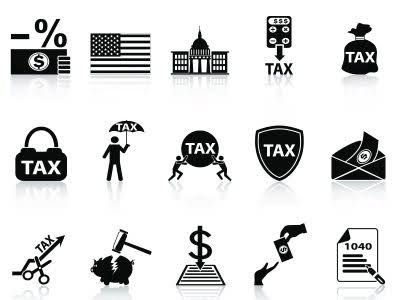
However, different accounting methods can adjust inventory; at times, it may not be as liquid as other qualified current assets depending on the product and the industry sector. This section is important for investors because it shows the company’s short-term liquidity. According to Apple’s balance sheet for fiscal year 2023, it had $143 million in the Current Assets account it could convert to cash within one year. This short-term liquidity is vital—if Apple were to experience issues paying its short-term obligations, it could liquidate these assets to help cover these debts. Trade accounts receivable that arise from ordinary sales are usually collected within a year or the operating cycle and thus are classified as current assets.
- As stated above, Accounts Receivable is an asset account recorded as current assets on your company’s balance sheet.
- Accounts receivable, abbreviated as AR or A/R,[1] are legally enforceable claims for payment held by a business for goods supplied or services rendered that customers have ordered but not paid for.
- The order in which these accounts appear might differ because each business can account for the included assets differently.
- This report groups your accounts receivable balances based on the age of each invoice.
- Remember that the allowance for uncollectible accounts is just an estimate of how much you won’t collect from your customers.
- Now, extending trade credit to your customers has a default risk attached to it.
- Adam received his master’s in economics from The New School for Social Research and his Ph.D. from the University of Wisconsin-Madison in sociology.
How are Accounts Receivable typically reported on the balance sheet?
When Lewis Publishers makes the payment of $200,000, Ace Paper Mill will increase the Cash Account by $200,000 and reduce Debtors or Accounts Receivable Account by $200,000. We provide third-party links as a convenience and for informational purposes only. Intuit does not endorse or approve these products and services, or the opinions of these corporations or organizations or individuals. Intuit accepts no responsibility for the accuracy, legality, or content on these sites. Of the many types of Current Assets accounts, three are Cash and Cash Equivalents, Marketable Securities, and Prepaid Expenses.

Is accounts receivable considered an asset?
However, if the number is too high, it could mean the company is not leveraging its assets as well as it otherwise could be. The customers to whom you sell goods or services on credit are recorded as trade debtors or accounts receivable in your books of accounts. That is, you record accounts receivable in general ledger accounts under the account titled ‘Accounts Receivable’ or ‘Trade Debtors’.

Why do investors care about current liabilities?

Accounts receivable, or receivables, can be considered a line of credit extended by a company and normally have terms that require payments be made within a certain period of time. Depending on the agreement between company and client, the payment might be due in anywhere from a few days to 30 days, 60 days, 90 days, or, in some cases, up to a year. At some point along the way, interest on the debt might also begin to accrue. Accounts receivable typically account for anywhere from 10-30% of total current assets depending on the size and industry of the organization. Whether or not accounts receivable counts as revenue is a tricky subject and tends to be determined by the method of accounting that your business uses.
Coming to some kind of agreement with the customer is almost always the less time-consuming, less expensive option. If you have a good relationship with the late-paying customer, you might consider converting their account receivable into a long-term note. In this situation, you replace the account receivable on your books with a loan that is due in more than 12 months https://www.bookstime.com/ and which you charge the customer interest for. Many companies will stop delivering services or goods to a customer if they have bills that are more than 120, 90, or even 60 days due. Cutting a customer off in this way can signal that you’re serious about getting paid. Accounts receivable are an asset account, representing money that your customers owe you.
- Current liabilities are important because they represent the amount of money that you owe to creditors.
- If the balance is going down, that means you’re collecting customer payments from previous invoices.
- The ratio, which is calculated by dividing current assets by current liabilities, shows how well a company manages its balance sheet to pay off its short-term debts and payables.
- In any case, in order for an asset to be classified as current, it must have a life span of less than one year.
- This includes cash itself, as well as investments, accounts receivable, and inventory.
- Property, plants, buildings, facilities, equipment, and other illiquid investments are all examples of non-current assets because they can take a significant amount of time to sell.

To be “material” means that it has a value significant enough to be worth noting for accounting purposes. Our business is built on supporting relationships between people and organizations, relationships that extend across frontiers of all kinds—geographical, financial, industrial, and more. We are accounts receivable are typically classified as current assets because constantly aware that our work has an impact on the communities we serve and that we have a duty to help and support others. At Allianz Trade, we are strongly committed to fairness for all without discrimination, among our own people and in our many relationships with those outside our business.
Submit to get your retirement-readiness report.
- If you enforce a policy, people will either start to pay you on time, or stop doing business with you (which may be fine, if they always pay late).
- The goal is to minimise the amount of receivables that are old, particularly those invoices that are over 60 days old.
- The current ratio is the most accommodating and includes various assets from the Current Assets account.
- You receive the cash in April but correctly recorded the revenue in March.
- Current assets appear on a company’s balance sheet and include cash, cash equivalents, accounts receivable, stock inventory, marketable securities, prepaid liabilities, and other liquid assets.
- Equity is the difference between the two, so once again, accounts receivable is not considered to be equity.
- Booking a receivable is accomplished by a simple accounting transaction.
